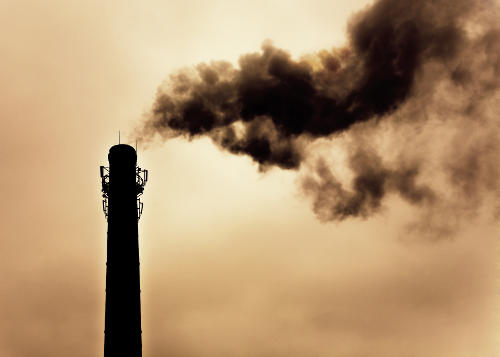River subbasins more depleted than
official figures show
09 April 2024
Published online 10 April 2017
Scientists have developed a roadmap for carbon emissions reduction, but it will be a hard sell in some Middle Eastern countries.

© Getty Images/iStockphoto/Thinkstock
“The Paris Agreement was a delicate political balance, and many countries did not want greater clarity on emission reductions,” says Steffen Kallbekken, head of the Centre for International Climate and Energy Policy. Kallbekken believes the agreement lacks clear targets for reducing emissions to the extent required.
The carbon law highlights and quantifies the practical challenges of achieving the Paris Agreement targets. The law, laid out in a policy forum article in Science1, is an exponential trajectory like Moore’s Law in the IT sector. In Moore’s Law, the pace of change is driven by the incoming technology; in this case, the change is driven by renewables, according to Kallbekken, not legacy resources such as oil and coal.
The carbon law paper broadly outlines what the Paris Agreement means in terms of emissions peaking, speed of decarburization of the global economy, the scale of carbon removal from the atmosphere and the need to turn land use from a carbon source to a carbon sink, halt deforestation and re-engineer agriculture to become an efficient store of carbon, explains co-author Owen Gaffney.
The paper, however, is trying to shift the debate over goals from long-term incremental goals to short-term exponential goals. Becoming carbon neutral post-2050 will not incentivize large-scale action now since, for some, the deadline is “too distant and abstract”, Gaffney says. Changing the framing to a carbon law that is applicable in the present, such as halving emissions every decade, creates near-term targets that are aligned with long-term goals. The researchers believe it ups chances of holding global temperature below 2°C above pre-industrial levels.
Although proposed as a global roadmap, the carbon law is applicable to the Arabic-speaking countries in the Middle East as it is elsewhere, states Gaffney.
The carbon law is also scalable; it applies to individuals, households, cities, companies and nations, he says. The law provides a mechanism for these sectors to address the challenge. In this way, individual businesses can adopt a carbon law approach.
Gaffney says that the Middle East is well placed to capitalize on renewables due to its ample supply of solar energy.
A country like Egypt will need financial support to make substantial progress.
“It remains to be seen if businesses in the Middle East will see it as attractive but certainly the response from business such as the B Team — a network of businesses committed to reducing emissions — has welcomed the analysis.”
According to the study, the last decade, renewable installation has been doubling every five and a half years. If this trajectory continues, the world could be 100% powered by renewables before 2050. Even increasing renewable installations two-fold every seven years should see coal leaving the energy mix around 2030-2035 and oil in the early 2040s, the article argues.
“This is useful to calculate the value of assets destined to be stranded,” the co-author says.
To make political sense, Kallbekken says that the carbon law has to make allowances for the stark differences among MENA countries in terms of wealth, technologies and resources. A country like Egypt, for instance, will need financial support to make substantial progress.
Theoretically, the law can be applied to the Arab world, says Julien Jreissati of Greenpeace Mediterranean. “However, in practice we need to have proper legislative and regulatory frameworks to ensure a sound enforcement of such a law, coupled with appropriate awareness for people to be receptive and willing to abide to this,” he argues, adding that “here is where our region is lacking behind.”
Steve Griffiths, interim executive vice president for research at the Khalifa University of Science and Technology (formerly the Masdar Institute of Science and Technology), believes that industry adoption of renewables will be slow.
Already, Middle Eastern and North African countries vary in their commitments to both renewables and the Paris Agreement itself.
Jreissati suggests that money generated from carbon tax could be used to further the MENA renewable energy agenda as well as climate adaptation work in vulnerable countries.
Griffiths, however, believes that countries should try to use market forces to stimulate climate supportive measures in MENA as opposed to carbon taxes and regulations.
Halving emissions every decade should be complemented by exponential roll-out of renewables, according to the study. Griffiths agrees, saying that MENA countries need to leverage the dramatic cost reduction in renewables to push deployments of renewable energy, for purely economic reasons. Intermittent renewables, such as solar and wind, can penetrate up to about 20% of electricity supply in most countries without triggering major system balancing costs, he claims.
“We are nowhere near this level in MENA countries and so tenders for new electricity supply should be toward renewable,” Griffiths points out.
Griffiths singles out the United Arab Emirates and Morocco as good examples of how cost-competitive utility-scale renewables can be tendered and deployed. In both countries, the government provides support with land, grid connections, solar resource assessments and options for attractive financing, he says.
In countries where electricity pricing is high, like Jordan, support for distributed renewables can work in the form of net-metering, a billing system that allows consumers to generate some or all of their own electricity, say from a solar source, and use that electricity anytime, a system which Dubai has also adopted, Griffiths points out.
Cutting fossil fuel subsidies by 2020, as the study proposes, is politically challenging for a country such as Saudi Arabia, says Kallbekken “I'm more optimistic when it comes to scaling up renewable energy in the region. While I think it unlikely that the proposed roadmap will be adopted globally, it is still valuable as a simple yardstick against which progress can be measured.”
doi:10.1038/nmiddleeast.2017.63
Stay connected: